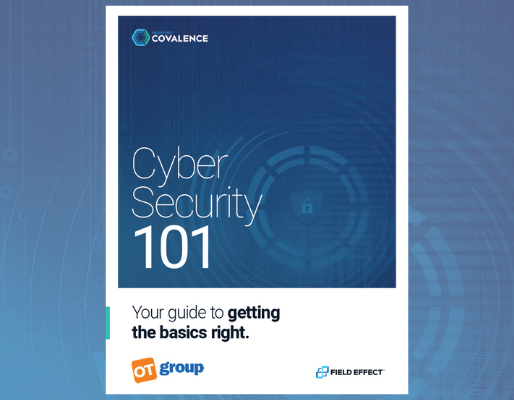With Cybercrime increasing across Canada and data breaches costing Canadian companies an average of CA$7.05 million per incident (an all-time high), it’s more important than ever before that businesses implement effective cybersecurity solutions.
Those figures are based on the latest 2023 IBM Security X-Force Threat Index, which found cybercrime has spiked in Canada with the most impacted industries being:
- Energy and utilities firms rose to the top of the victim list in Canada, constituting 60 percent of all attacks responded to by IBM X-Force in 2022 (up from 21 percent last year).
- Finance and insurance was Canada’s second most attacked industry, representing 20 percent of attacks last year (up from 16 percent the previous year).
- Retail has emerged as the third most attacked industry, accounting for 10 percent of all attacks in 2022.
With that in mind, it's essential for businesses - of all sizes and industries - to take proactive measures to protect themselves from cyber threats. Here are ten ways to protect your business from cybercrime.
#1 - Train Your Employees on Cybersecurity Best Practices
Your employees are your first line of defence against cyber threats. Ensure that they are aware of the common cyber risks and how to identify and respond to them. Provide regular training sessions, quizzes, and simulations to keep employees up-to-date on the latest threats and how to prevent them through cybersecurity best practices.
#2 - Implement Multi-Factor Authentication
Multi-factor authentication adds an extra layer of security to your login process and helps prevent unauthorized access to your business systems. Use biometrics, smart cards, or tokens in combination with usernames and passwords to ensure secure access.
#3 - Regularly Update Your Software and Operating Systems
Software updates often include security patches that address known vulnerabilities. Ensure that you're running the latest version of all software and operating systems. Set up automatic updates or create a regular schedule for manually updating software.
#4 - Use Strong Passwords and Password Managers
Weak passwords can be easily cracked by cybercriminals. Use strong passwords that include a mix of letters, numbers, and special characters. Consider using a password manager to store and generate complex passwords. Password managers also enable your business to easily revoke access to compromised passwords.
#5 - Backup Your Data Regularly
Regularly backing up your data helps ensure that you can recover from a cyber attack. Store backups in a secure location and test them regularly to ensure that they are working correctly. Use a mix of backup methods, including cloud backup and offline storage, for added redundancy.
#6 - Secure Your Networks
Ensure that your Wi-Fi networks are secured with a strong password and that any sensitive information transmitted over the network is encrypted. Use virtual private networks (VPNs) for remote access to your network, and ensure that all connected devices have updated antivirus software.
#7 - Use Firewalls and Anti-Virus Software
Firewalls and anti-virus software help protect your systems from malware and other cyber threats. Ensure that these are updated regularly and that they cover all connected devices, including smartphones and tablets.
#8 - Limit Access to Sensitive Data
Restrict access to sensitive data to only those employees who need it to perform their jobs. Use access control mechanisms like role-based access control (RBAC) and least privilege to ensure that employees can only access the data and systems necessary for their roles.
#9 - Conduct Regular Security Assessments
Regular security assessments can help identify vulnerabilities and address them before they are exploited by cybercriminals. Conduct external and internal security audits, penetration testing, and vulnerability assessments to identify weaknesses in your security posture.
#10 - Develop an Incident Response Plan
In the event of a cyber attack, having an incident response plan in place can help mitigate the damage and minimize downtime. Ensure that all employees are aware of the plan and that it's regularly reviewed and updated. Include communication protocols, backup and recovery procedures, and a plan for reporting the incident to the relevant authorities.
Cybercrime is a significant threat to businesses in Canada. Taking proactive measures to protect your business from cyber threats is essential. By implementing these ten cybersecurity best practices, you can help safeguard your business from cybercriminals and protect your sensitive data.
Remember, prevention is key, and the investment in cybersecurity is worth the cost compared to the potential losses resulting from a cyber attack.
Not sure where to start? Get in touch with OT Group today. Our team of Ontario-based cybersecurity and IT solution specialists would love to answer any questions that you may have and help you enhance your company’s security.



.png)

